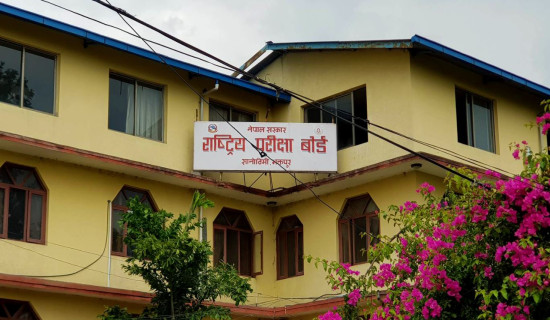- Friday, 26 April 2024
Interest Rate Vs Inflation
Rate of interest in the financial market plays a crucial role for the growth and stability in the economy as it directly affects the cost of capital. High rate of interest on lending makes capital costlier resulting in the contraction of business activities. Conversely, low market interest rate makes credits cheaper and helps to boost business activities in the economy. Under the current liberal financial sector policy adopted by Nepal Rastra Bank (NRB), the market rate of interest is determined by the demand and supply of loanable fund in the financial market. The supply of loanable fund depends on the deposit collection of bank and financial institution while the demand is made by the business and household sectors.
If we look at the present scenario, supply of the capital is less than its demand mostly due to the sluggish growth in deposit collection. Indeed, a situation of liquidity crisis is still prevailing in the financial market. The high demand of loanable fund in line with the slow growth of deposits has led to a significantly high rate of interest on both lending and deposits. The average base rate of commercial banks has reached 10.34 per cent in the third month of the fiscal year 2022/23 from 7.57 per cent a year ago. Weighted average deposit rate and lending rate of commercial banks stood at 8.16 per cent and 12.19 per cent respectively in the review month. Such rates were 5.43 per cent and 8.69 per cent respectively a year ago.
Considering the possible adverse effects of rising rate of interest, the central bank has recently introduced policy measures to check the rising rate of interest rates. Through the quarterly review of its monetary policy, the central bank has reduced the average interest rate by 0.4 percentage points and has also applied other liquidity management tools to prevent the interest rate from further rise. However, the private sector does not seem happy enough from the initiation of the NRB to control interest rates.
According to a news report published in this daily the other day, Nepal Chamber of Commerce (NCC) has claimed that the arrangement made by the Nepal Rastra Bank (NRB) through the quarterly review of the monetary policy cannot maintain financial stability. The NCC has said that even the quarterly review along with the tight monetary policy cannot address the problems seen in the financial sector. The NCC viewed that arrangements made by the NRB through recent monetary policy review alone are not sufficient to address the existing problems and to make economic activities sustainable. The Chamber has requested the central bank to maintain the premium charged by the banks and financial institutions at the base rate only to a maximum of 2 per cent, reduce the current 8.5 per cent bank rate to 5 per cent, and increase the CD ratio to 95 per cent from existing 90 per cent . It urged to ease the import of some discouraged items by facilitating cash margin provision imposed on opening LC.
Though the measures proposed by the association of the private sector seeks to resolve the problems of high interest rate, these measures could have adverse effects on the economic stability at a time when the rate of inflation is very high and the growth of deposit collection in BFIs is very low. Significantly low rate of interest in this situation could further shrink deposit collection and stimulate the rate of inflation in the economy. Therefore, the NRB should choose policy measures to resolve existing problems very cautiously keeping in mind the overall macroeconomic stability.

.jpg)














